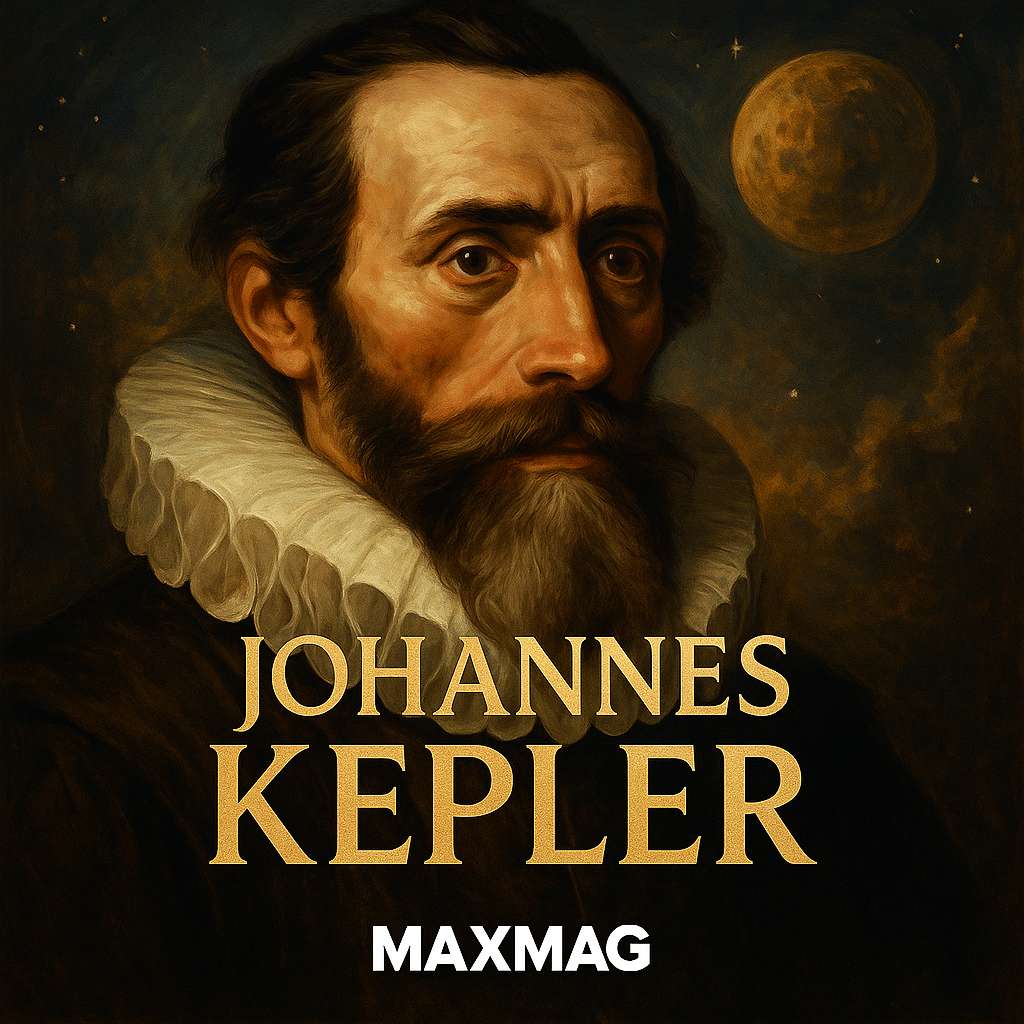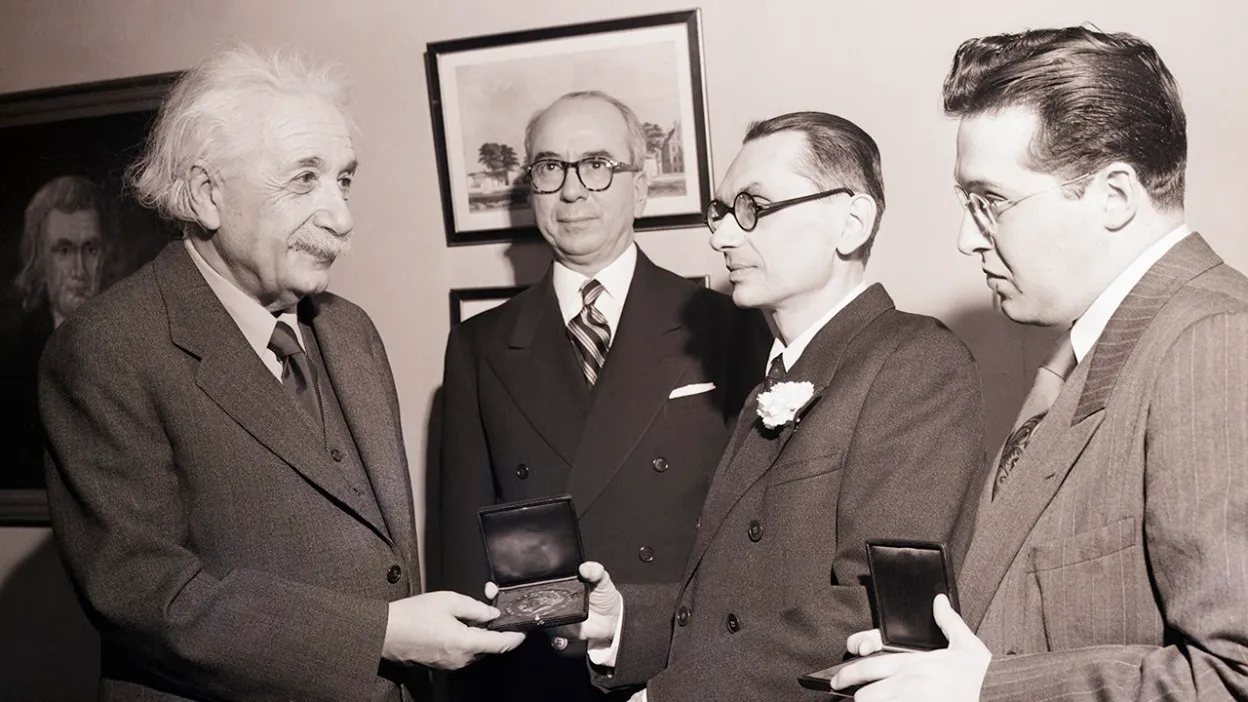
Kurt Gödel was one of the most original thinkers of the 20th century—his work shattered the foundations of mathematics, reshaped logic, and continues to echo across disciplines from philosophy to computer science. In this Kurt Gödel biography, we uncover not only the story of a man who introduced the Incompleteness Theorems, but also the deeply introspective, enigmatic life he led in the shadows of his towering genius.
Born into the twilight of the Austro-Hungarian Empire and dying in self-imposed silence in the U.S., Gödel’s journey was marked by brilliant breakthroughs, profound friendships, and a lifelong struggle with isolation and paranoia. His life illustrates the price of intellectual greatness—and the emotional cost of being a mind apart from the world.
Kurt Gödel Biography – Early Life and Education
Kurt Friedrich Gödel was born on April 28, 1906, in Brünn, Moravia, then part of the Austro-Hungarian Empire. The region would later become Brno in modern-day Czechia. Gödel was the second son of Rudolf Gödel, a textile factory manager, and Marianne Gödel, an educated and cultured woman of German ancestry. From a young age, Kurt displayed an unusual sensitivity to his surroundings and an almost obsessive intellectual curiosity.
Get the best of tech, movies, and culture from MaxMag — weekly.
SubscribeBy age four, he had already started learning foreign languages, and by ten, he was reading medical textbooks and Latin literature. He suffered from rheumatic fever at age six, which left a lasting psychological impact. His mother noted he became intensely aware of his body’s sensations and grew fixated on the idea of illness—a theme that would follow him into adulthood.
During his adolescence, Gödel often retreated into solitary study. His family affectionately dubbed him “Herr Warum” (“Mr. Why”) due to his relentless questioning of every statement or assumption. He was fascinated by history, philosophy, and mathematics, and attended the German-language Realschule in Brno, excelling in nearly every subject.
In 1924, he enrolled at the University of Vienna. At first, Gödel intended to pursue physics, but after encountering the lectures of philosopher Moritz Schlick and mathematicians Hans Hahn and Rudolf Carnap, he shifted his focus to mathematical logic and philosophy.
The University of Vienna was home to the influential Vienna Circle—a group of philosophers and scientists committed to logical positivism and the rigorous analysis of language and knowledge. While Gödel was never officially a member, he often attended their meetings. Unlike the Circle’s strict empiricism, however, Gödel believed in mathematical Platonism—the view that mathematical truths exist independently of human thought.
The Incompleteness Theorems: A Revolution in Thought
At just 23 years old, Gödel submitted a doctoral thesis that earned him instant recognition within academic circles. But it was his 1931 paper, On Formally Undecidable Propositions of Principia Mathematica and Related Systems, that truly altered the course of modern mathematics.
In it, Gödel demonstrated two groundbreaking results now known as the First and Second Incompleteness Theorems:
-
First Theorem: In any consistent formal system capable of expressing arithmetic, there are true statements that cannot be proven within the system.
-
Second Theorem: The consistency of such a system cannot be proven from within the system itself.
These results delivered a fatal blow to David Hilbert’s program, which aimed to base all mathematics on a complete, consistent, and decidable set of axioms. Gödel’s work showed this goal was logically unattainable. The consequences extended far beyond mathematics: philosophers, linguists, and even theologians saw in Gödel’s theorems a reflection of the limits of knowledge and language.
Further Reading: Stanford Encyclopedia of Philosophy: Gödel’s Theorems
His method of constructing a self-referential mathematical statement—essentially a formalized version of the liar paradox—was dazzling in its precision. He used what’s now called “Gödel numbering” to assign unique natural numbers to symbols, formulas, and proofs, turning logical structure into arithmetic. This blending of logic and number theory opened entirely new avenues in mathematics and symbolic logic.
Gödel had not merely answered the questions of his time—he redefined what it meant to ask them.
Escape from Europe and the Long Journey to Princeton
Gödel’s growing international reputation could not shield him from the political upheaval in Europe. As fascism spread, many of his colleagues and friends—especially Jewish members of the Vienna Circle—fled Austria. In 1938, Adolf Hitler’s Anschluss absorbed Austria into Nazi Germany. Gödel, though not Jewish, was subject to scrutiny due to his academic ties and philosophical beliefs.
In December 1939, Gödel married Adele Nimbursky, a dancer and divorcee several years his senior. Though their relationship was unconventional by academic standards, Adele would prove a steadfast companion and caregiver for the rest of his life.
With the help of Albert Einstein and other contacts, Gödel secured an invitation to the Institute for Advanced Study (IAS) in Princeton. Rather than travel directly westward, the couple journeyed through Nazi Germany, the Soviet Union, and Japan before finally arriving in the United States.
He joined the IAS faculty in 1940, taking his place alongside some of the greatest minds of the century—including Einstein, Oppenheimer, and von Neumann.
Einstein, Time Travel, and the Limits of Reality
One of the most profound relationships in Gödel’s life was his friendship with Albert Einstein. The two men took daily walks in Princeton, discussing the universe, determinism, metaphysics, and beyond. Einstein later admitted that conversing with Gödel was one of his main reasons for continuing his daily routine at the IAS.
In 1949, as a tribute to Einstein’s 70th birthday, Gödel presented a solution to the field equations of general relativity. This “Gödel metric” allowed for a universe where time travel was theoretically possible via closed timelike curves. While physicists debated the physical plausibility, the work demonstrated Gödel’s unparalleled ability to bridge logic and physics.
Further Reading: Quanta Magazine – Gödel’s Impact on Modern Thought
Gödel was fascinated by the nature of time and reality, often arguing against the prevailing scientific consensus. He rejected the idea that time “flows” and believed in a timeless, Platonist universe. For him, mathematics wasn’t invented—it was discovered.
Obsession, Illness, and Isolation
Despite his growing stature, Gödel’s mental health began to deteriorate in the 1940s and 50s. He became deeply paranoid and developed severe hypochondria. Convinced he was being poisoned, he trusted only Adele to prepare his meals. He kept meticulous diaries about his health and became obsessed with diseases both real and imagined.
Though he continued to publish and correspond, he grew increasingly reclusive. He rejected standard medical treatment and refused psychiatric care. Friends and colleagues noted his erratic behavior, but few intervened—his mind, even in decline, was still awe-inspiring.
Gödel spent years crafting an ontological proof for the existence of God, building on the ideas of Leibniz. He believed it was among his most important contributions. Although many dismissed the proof as overly abstract or theological, it has gained renewed interest in recent decades—especially in computer-aided formal logic.
In 1976, Adele was hospitalized and unable to care for him. Deprived of the only person he trusted to prepare his food, Gödel stopped eating. He died of self-starvation on January 14, 1978, weighing just 65 pounds.
Philosophical Views and Personal Writings
Throughout his life, Gödel maintained an extensive private notebook collection filled with thoughts on theology, ethics, politics, and cosmology. He admired Leibniz and Kant and rejected both relativism and materialism. He believed in an objective mathematical and moral reality, invisible but absolute.
In letters to friends and students, he speculated about life after death, the soul, and divine perfection. His Platonism was not just a mathematical view—it was a worldview. He believed truth existed independently of human perception and that the human mind could, with enough effort, access it.
In a world increasingly focused on empiricism and technological utility, Gödel remained a metaphysician.
Enduring Legacy and Influence Across Disciplines
Gödel’s influence extends far beyond mathematics. His work laid the groundwork for developments in:
-
Computer Science: His theorems influenced Alan Turing’s concept of undecidability, paving the way for modern computing theory.
-
Artificial Intelligence: Debates around the limits of machine learning and consciousness often reference Gödel’s ideas.
-
Philosophy of Mind: Thinkers like Roger Penrose have cited Gödel in arguments against strong AI, suggesting that human consciousness may transcend algorithmic processes.
-
Theology and Metaphysics: Gödel’s formal proof of God’s existence is still studied by scholars in logic and theology.
Further Reading: Scientific American – Gödel’s Legacy
Even today, new interpretations of his theorems continue to emerge. His work remains relevant not just for what it proved—but for what it made possible.
FAQ – Understanding Kurt Gödel’s Life and Ideas
Q1: What is the significance of the Kurt Gödel biography in modern science?
A1: Gödel’s life exemplifies the profound intersection of mathematics, philosophy, and the human condition. His work reshaped logic and continues to inform debates in AI, physics, and theology.
Q2: Why are the Incompleteness Theorems so important?
A2: They proved that no formal system can prove all truths about arithmetic, showing the inherent limitations of mathematics itself.
Q3: Was Gödel mentally ill?
A3: Gödel suffered from paranoia, obsessive health fears, and possibly undiagnosed schizophrenia. These issues worsened in his later years, culminating in self-starvation.
Q4: What was Gödel’s relationship with Einstein like?
A4: They were close friends and intellectual partners. Gödel’s ideas about time even challenged Einstein’s views in profound ways.
Q5: Did Gödel believe in God?
A5: Yes, Gödel was a theist and developed a formal ontological proof for God’s existence, reflecting his deep metaphysical commitments.
Q6: Where can I study Gödel’s original works?
A6: Try resources like the Stanford Encyclopedia of Philosophy or academic archives at the Institute for Advanced Study.







